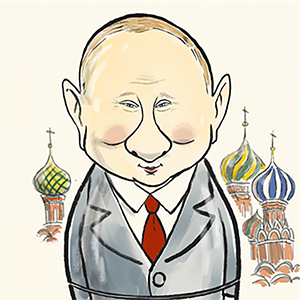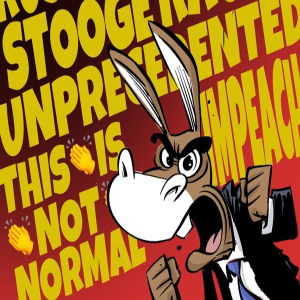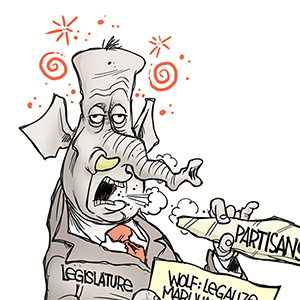Apple was on brink of crisis before Trump tariff concession
Published in News & Features
Apple Inc. has managed to dodge its biggest crisis since the pandemic — for the moment, at least.
Donald Trump’s 125% tariffs on goods produced in China threatened to upend its supply chain as seriously as the Covid snarls did five years ago. On Friday night, the U.S. president handed Apple a major victory, exempting many popular consumer electronics. That includes iPhones, iPads, Macs, Apple Watches and AirTags.
Another win: The 10% tariff on goods imported from other countries has been dropped for those products.
A new and lower so-called sectoral tariff may still come on goods that have semiconductors, and a 20% tariff still applies to electronics shipped from China. Over the weekend, Trump pledged he will still apply tariffs to phones, computers and popular consumer electronics, portraying the exemptions as a procedural step in a broader effort to remake U.S. trade.
Still, the timing for such a move remains uncertain. Till then, the surprise exemption marks a win for Apple and a consumer electronics industry that still heavily relies on the Asian nation for manufacturing.
“This is a major relief for Apple,” Evercore ISI analyst Amit Daryanani said in a note on Saturday. “The tariffs would have driven material cost inflation.”
He expects the shares to rally Monday following an 11% rout this month.
Before the latest exemption, the iPhone maker had a plan: adjust its supply chain to make more U.S.-bound iPhones in India, which would have been subject to far lower levies. That, Apple executives believed, would be a near-term solution to avoid the eye-watering China tariff and stave off hefty price hikes.
Given that the iPhone facilities in India are on pace to produce more than 30 million iPhones per year, manufacturing from that country alone could have fulfilled a fair chunk of American demand. Apple, these days, sells about 220 million to 230 million iPhones annually, with about a third of those going to the U.S.
Such a shift would be difficult to pull off without a hitch, especially because the company is already nearing production of the iPhone 17, which will be made primarily in China. Within Apple’s operations, finance and marketing departments, fears had grown about the impact on the fall launch of new phones — and fueled a sense of dread.
The company, in just a few months, would have needed to pull off the herculean task of moving more iPhone 17 production to India or elsewhere. It likely would have had to increase prices — something that’s still possible — and fought with suppliers for better margins. And Apple’s famous marketing engine would have had to convince consumers it was all worth it.
But the feeling of uncertainty remains. White House policies are likely to shift again, and Apple may need to pursue more dramatic changes. At least for now, though, management is breathing a sigh of relief.
The Chinese Ministry of Commerce called the move “a small step by the U.S. toward correcting its wrongful action of unilateral ‘reciprocal tariffs’, and urged the U.S. to “take a big stride in completely abolishing the wrongful action, and return to the correct path of resolving differences through equal dialog based on mutual respect.”
However, smartphones other electronic devices that won exemptions will be part of a forthcoming levy on semiconductors, according to U.S. Commerce Secretary Howard Lutnick.
Speaking Sunday on ABC’s This Week, Lutnick signaled that the late Friday reprieve — exempting a range of electronics from 125% tariffs on China and a 10% flat rate around the globe — was temporary, and reiterated Trump’s longstanding plan to apply a different, specific levy to the sector.
Another concern: If Apple moves even more production from China at a rapid pace, how would the country retaliate? Apple generates about 17% of its revenue from the country and operates dozens of stores, making it an outlier among US-based companies. An Apple spokesman declined to comment.
China has launched competition inquiries into U.S. companies and could create issues for Apple through its own customs process. In recent years, it has also banned iPhones, among other U.S.-designed devices, from its legion of government workers. That followed a U.S. crackdown on Chinese tech champion Huawei Technologies Co.
The iPhone is Apple’s biggest moneymaker, and about 87% of them are produced in China, according to estimates from Morgan Stanley. About four in five iPads also are made in the country, along with 60% of Macs.
All together, those products are responsible for about 75% of Apple’s annual revenue. Still, the company now builds nearly all of its Apple Watches and AirPods in Vietnam. Some iPads and Macs are also manufactured in that country, and Mac production is expanding in Malaysia and Thailand.
The company generates about 38% of its iPad sales in the U.S., as well as about half its Mac, Apple Watch and AirPods revenue, Morgan Stanley estimates.
A complete split with China — Apple’s manufacturing hub for decades — would be unlikely. Though Trump has pushed Apple to make iPhones in the U.S., the lack of domestic engineering and manufacturing talent will make that nearly impossible in the short run.
The size and scale of the facilities in China makes it unmatched in speed and efficiency. The China production also is crucial for Apple’s sales in the world beyond the U.S. The Cupertino, California-based company gets nearly 60% of its revenue outside of the Americas.
Since a wave of tariffs were announced on April 2, lobbyists from Apple and other technology companies have been pushing the White House for exemptions.
But the discussions took on extra urgency in recent days after a series of tit-for-tat retaliations between Washington and Beijing led to what amounted to 145% duties on imports from China.
The potential impact was even more stark after Trump paused higher tariffs on other countries. That meant Apple rival Samsung Electronics Co., which makes its phones outside China, would have had an edge.
Apple and other companies have been stressing to the Trump administration that — while they are willing to increase investment in the U.S. — there’s little benefit in moving final assembly to the country. Instead, they have argued, the U.S. should be focusing on bringing back higher-value jobs and encouraging investment in things like semiconductor production.
©2025 Bloomberg L.P. Visit bloomberg.com. Distributed by Tribune Content Agency, LLC.







Comments